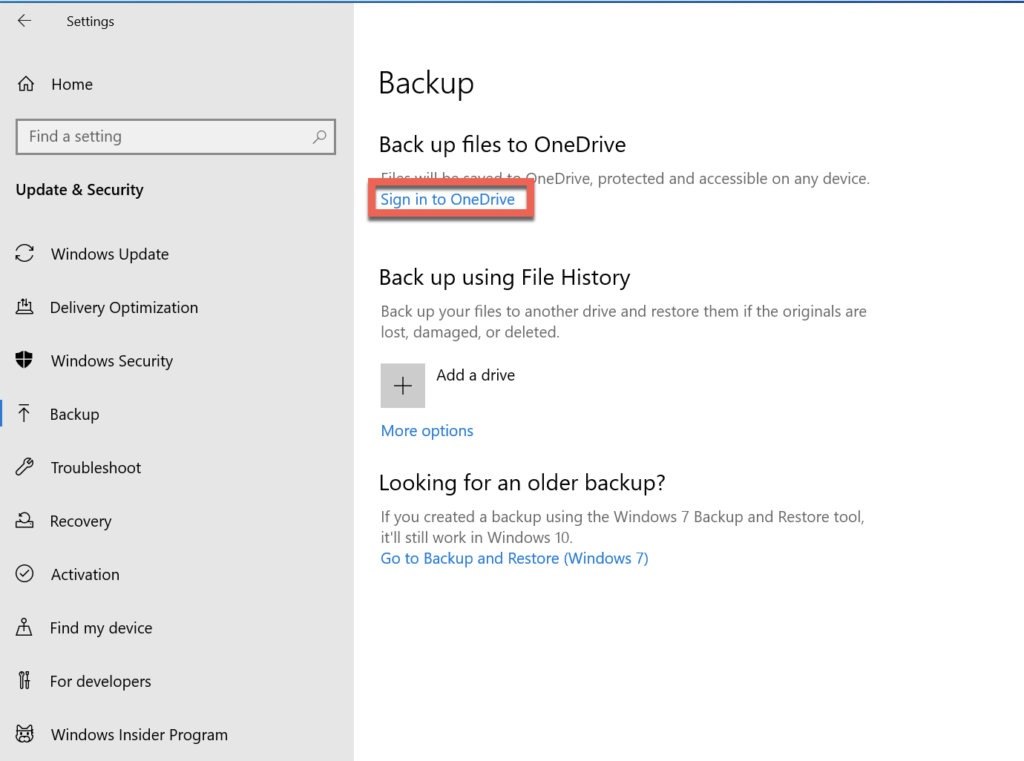

Even if that’s not the case, you don’t want user-error to impact how well the solution works.
MICROSOFT ONEDRIVE BACKUP INSTALL
Is the solution easy to install and use? In an ideal circumstance, your Microsoft 365 backup solution should be part of a complete solution that protects all workloads.Whether you outsource data protection to a trusted service provider, or you are a service provider evaluating a solution you can manage for customers, there are a few considerations to keep in mind: When it comes to evaluating which third-party solution is right for your organization, you’ll want to ensure that it protects the apps you rely on.Ĭriteria to Evaluate Microsoft 365 Data Protection Solutions To name a few use-cases, users can host and share internal Human Resources/Accounting and other policies and documentation, digital campaigns for cross-team collaboration, and even host websites and social media. It also can become the back-end “face” of your organization. If your business is like many others, SharePoint proves a useful tool for organization-wide document and file collaboration. Meanwhile, file sharing and collaboration is made easy, and you can still work off-line. This app makes storing files remotely in the cloud easy, so your work can come with you wherever you are. These means that Exchange hosts data in the form of emails, attachments, contacts, task lists, user groups, organizational file folders, and calendars – all essential elements for any individual employee let alone running a business effectively. Microsoft Outlook users retrieve their email on their desktop via the Exchange software, which operates on the server. Three of the most popular apps are Exchange Online, OneDrive for Business, and SharePoint Online. Safeguard Popular Microsoft 365 Apps and the Data They Hold This puts you at risk of violating regulatory retention policies due to the potential of data loss via deactivated subscriptions. Deprovisioning, or deleting accounts after they are closed, is controlled by Microsoft so data access is only permitted for a limited time.(Long-term retention via Microsoft’s “In Place Archives” serve as a second storage bin that increases storage usage.) Meanwhile, being able to retrieve older data is often necessary. Retaining data for too long also can be a compliance risk, as well as costly. For example, particular settings must be in place to retrieve files beyond a certain number of days this number varies and is not well documented. Data retention policies are limited and limiting.

This means that sacred files may be permanently purged before an employee leaves an organization. The recycle bin is controlled by the user, leaving the door open for users to delete what they wish.It’s also impossible to recover a file to a different user. (This approach is different than backup, which offers multiple recovery points.) This limitation is particularly challenging for OneDrive and SharePoint users who generate multiple drafts or iterations. Saved files are only linked to version histories, so if one file is deleted there is no way to go back and retrieve an earlier version – everything is gone.

This means there is a concerning lack of IT control available to reliably back up Microsoft 365 data completely.

But when it comes to Microsoft 365 specifically, there is no actual backup in place for users and no self-service option for recovery. One might think a vendor is the first line of defense for protecting data on their own system or app. To keep data safe and be able to recover important files and documents quickly, backup is the key to avert disaster. Data is Essential for Doing Business … Is Yours Backed Up?


 0 kommentar(er)
0 kommentar(er)
